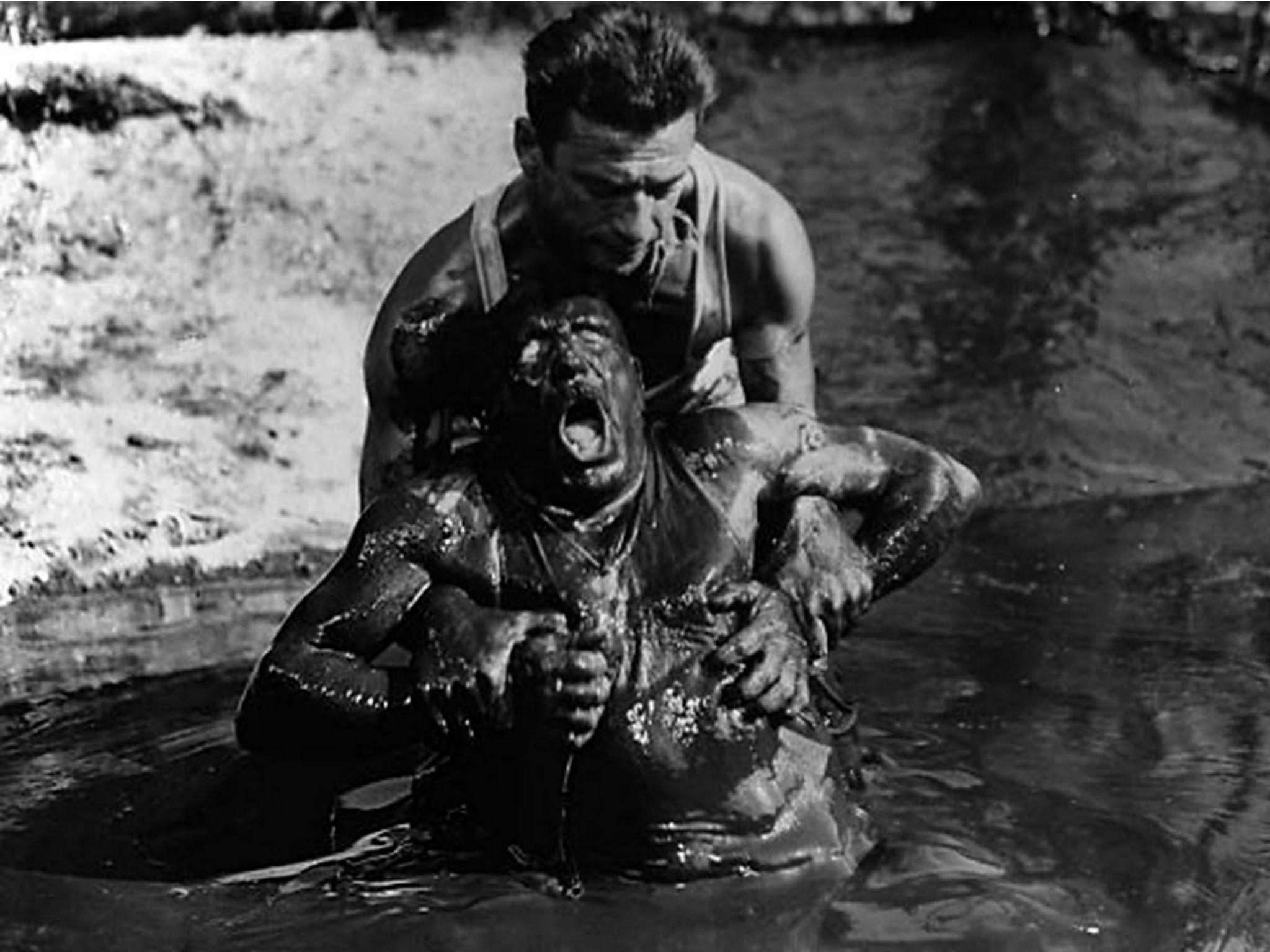Movies You Might Have Missed: Henri-Georges Clouzot's The Wages of Fear
Despite obstacles, such as the director breaking his ankle and an unusually rainy season in the South of France that caused sets to be ruined, the end result was an audacious masterpiece

Your support helps us to tell the story
From reproductive rights to climate change to Big Tech, The Independent is on the ground when the story is developing. Whether it's investigating the financials of Elon Musk's pro-Trump PAC or producing our latest documentary, 'The A Word', which shines a light on the American women fighting for reproductive rights, we know how important it is to parse out the facts from the messaging.
At such a critical moment in US history, we need reporters on the ground. Your donation allows us to keep sending journalists to speak to both sides of the story.
The Independent is trusted by Americans across the entire political spectrum. And unlike many other quality news outlets, we choose not to lock Americans out of our reporting and analysis with paywalls. We believe quality journalism should be available to everyone, paid for by those who can afford it.
Your support makes all the difference.Henri-Georges Clouzot was often regarded as the “French Hitchcock” yet even the master of suspense never quite managed to direct a film as lengthy and gripping as The Wages of Fear (1953). This, along with Les Diaboliques (a previous subject of this column), established Clouzot’s reputation as one of the finest filmmakers of the era despite a production plagued by difficulties and a relentlessly bleak tone without even the hint of a score beyond the creaks and drones of engines.
The film opens with a shot of a young boy torturing cockroaches in the street. He longs for a dessert treat offered by a merchant in his cart but doesn’t have the funds. By the time the boy realises this and returns to his cockroaches, they’ve been devoured by vultures. Clouzot immediately makes clear this is a dog-eat-dog world inhabited by poor and desperate people with little hope of escape. The set-up is so perfect it is probably taught in film schools across the globe; four Europeans trapped in an isolated town in South America are offered a wage of $2000 a man to transport highly volatile nitroglycerine shipments across some of the most treacherous terrain on earth knowing that the slightest miscalculation and death is a certainty.
The Wages of Fear is in no hurry to get on the road and Clouzot spends the first hour or so exploring the cynical, amoral world inhabited by the characters while slowly teasing out their backstories. Yves Montand’s sadistic playboy befriends an ageing gangster played by Charles Vanel but there is always a noirish undertone and one can never be quite sure about the strength of such allegiances. The filmmaker sensibly focuses on creating a world so bleak that the audience can believe these men would risk their lives for the promise of payment. The last 90 minutes, during which the two trucks are driven along dirt roads, are undoubtedly amongst the most thrilling in cinema history.
Filming began in August 1951 and was supposed to last nine weeks. Unfortunately, the south of France had an unusually rainy season that caused vehicles to bog down, cranes to fall over and sets to be ruined. The director broke his ankle and his wife, Véra Clouzot, fell ill. The budget spiralled but, with winter approaching and days getting shorter, production was shut down for six months. To make matters worse, the initial plan was to film in Spain but Montand refused while Franco was still in power. The second half of the picture was finally completed in the summer of 1952 and the result was an audacious masterpiece with an ending that’s impossible to shake.
Join our commenting forum
Join thought-provoking conversations, follow other Independent readers and see their replies
Comments